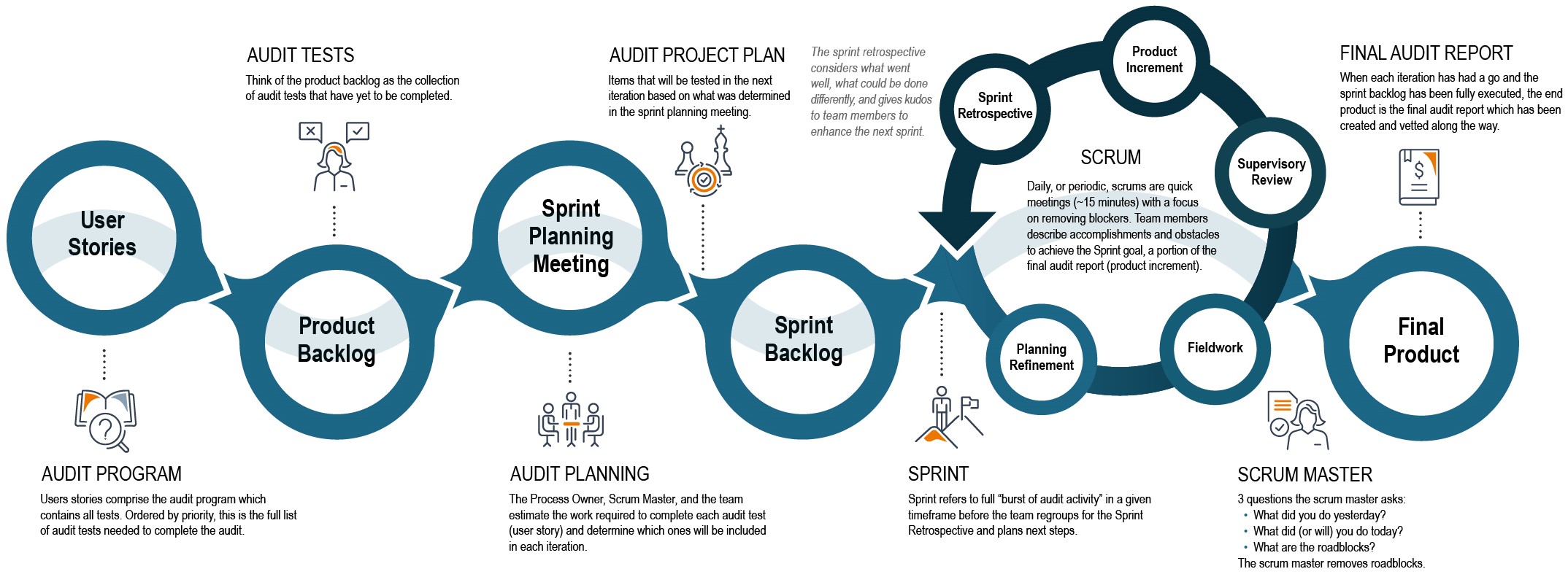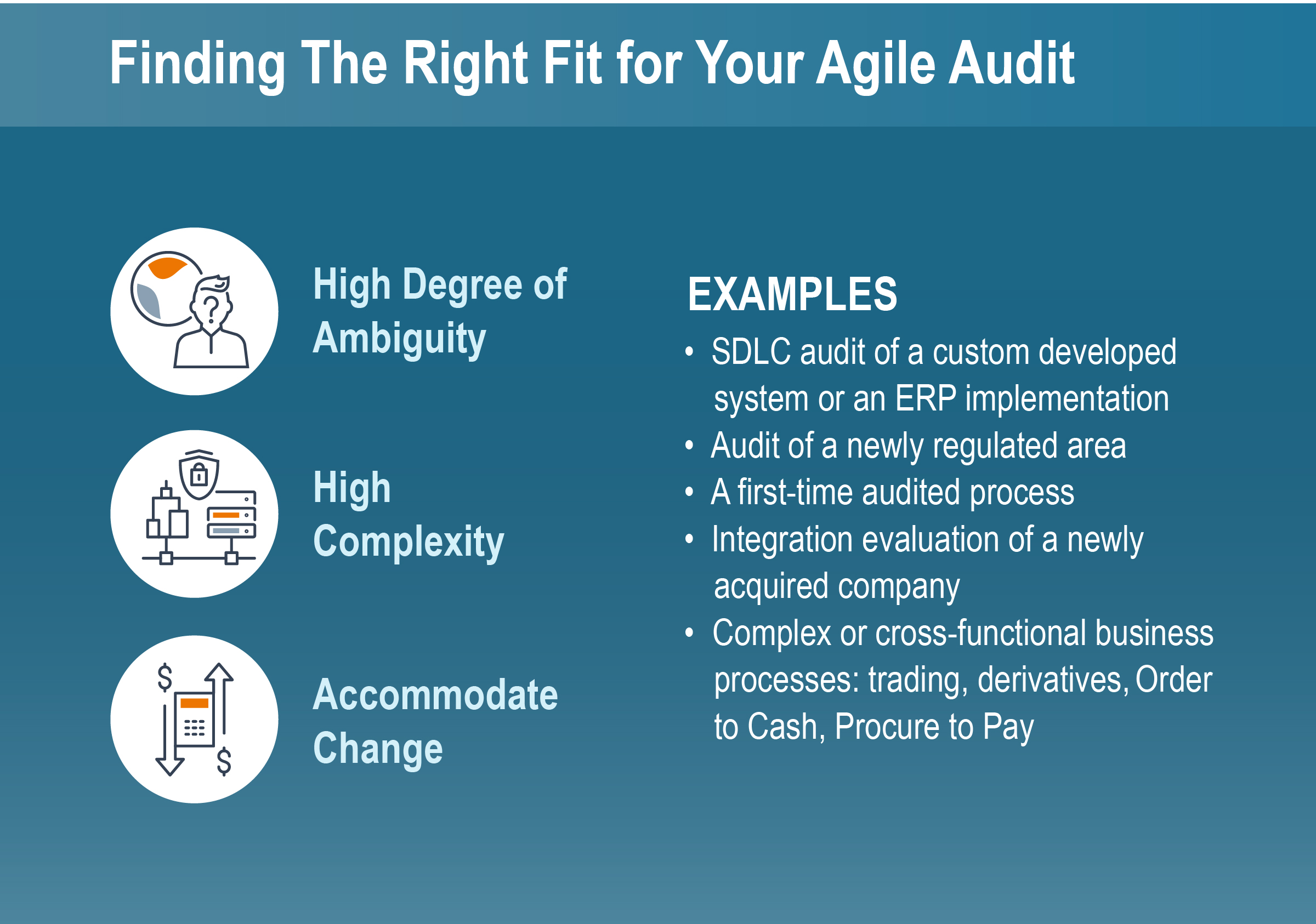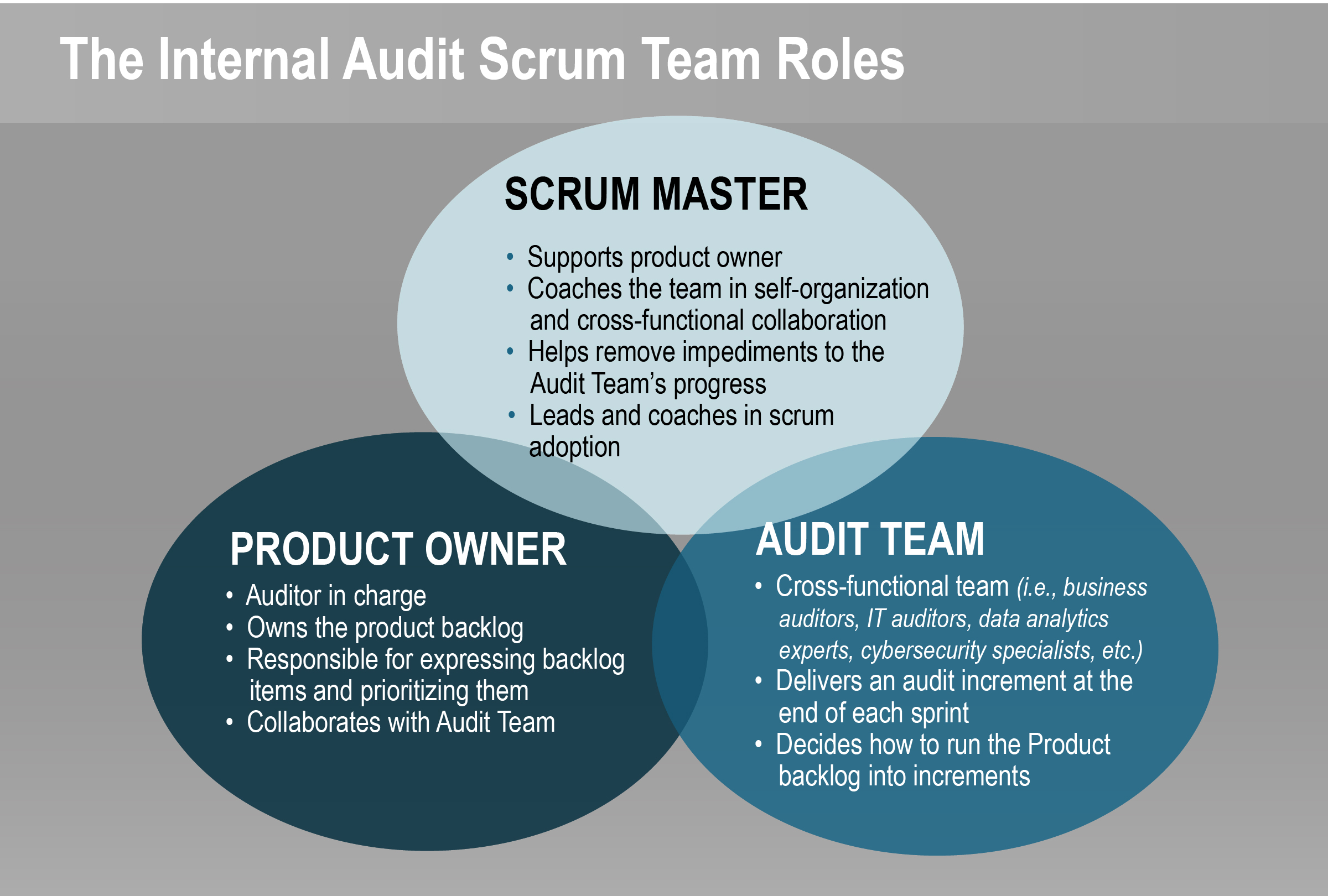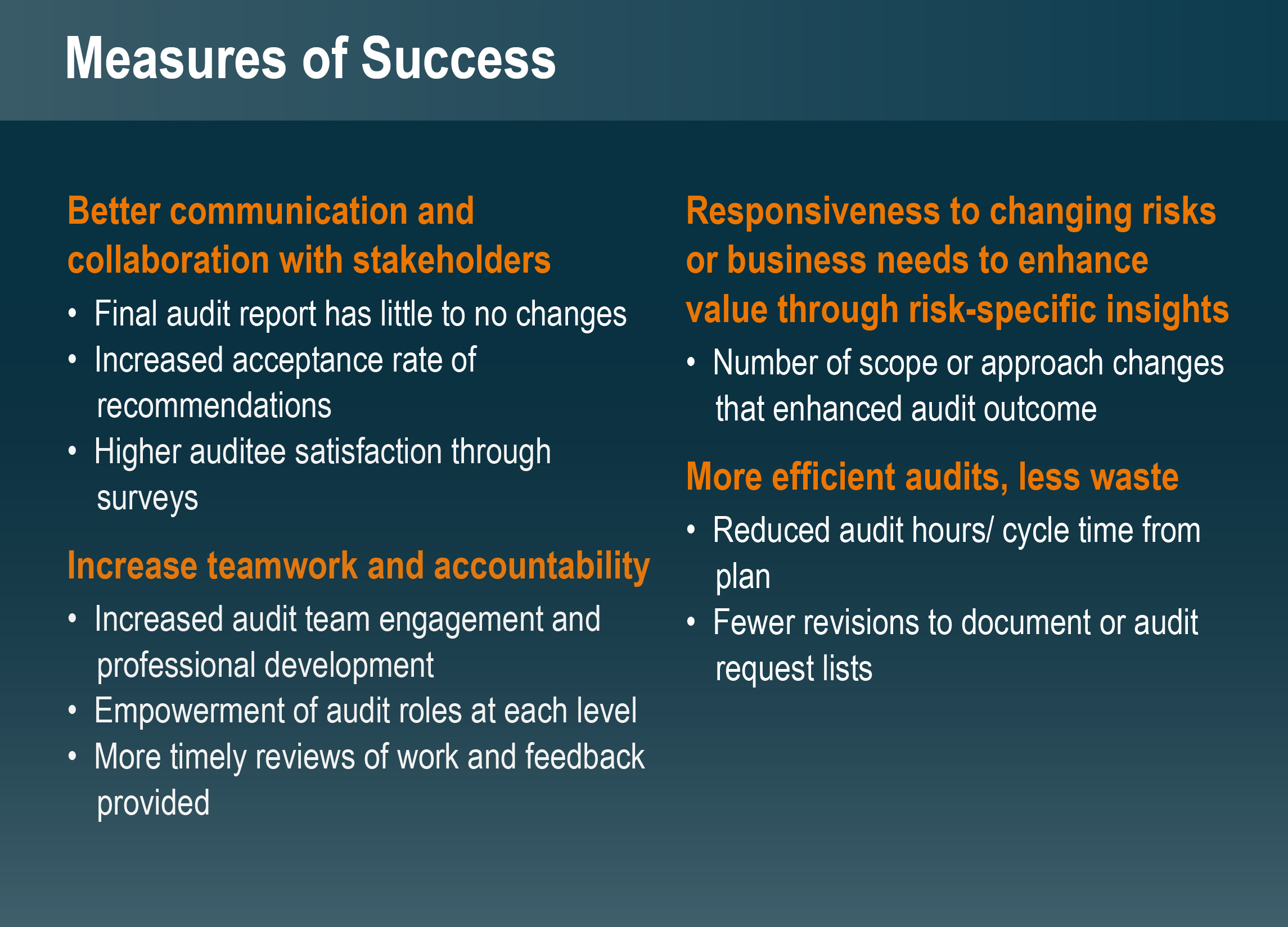Over the past few years, the internal audit profession has been learning the agile approach to value creation. Software developers use the agile methodology to develop and test cutting-edge software that meets users’ needs. But internal audit projects can also benefit from the application of agile software development for their own purposes.
That brings us to the agile audit.
What Is Agile Auditing?
Agile auditing is the process by which the internal audit team applies agile methods to audit practices with the goal of accelerated audit efficiencies, greater collaboration among stakeholders, and deeper insights generated.
An agile technique differs from traditional auditing in the sense that it leverages team-oriented solutions, responsiveness to change, and enhanced cross-functional input from risk management, cybersecurity, and other compliance stakeholders. Internal auditors use it to assess risk, develop value-add recommendations tailored to the organization’s environment, and gain critical buy-in from stakeholders who are instrumental in driving positive change inside and outside of the internal audit function.
The benefits of agile include:
- Improving collaboration leading to better engagement;
- Increasing efficiency through higher-quality outputs and clearer outcomes;
- Enhancing value through risk-specific insights;
- Accelerating response times to changing risks or business needs; and
- Empowering audit roles through a flexible audit approach.
The Full Agile Audit Process
Intrigued by the benefits of agile, internal auditors are often challenged by how to apply agile without making the audit process longer and less efficient, especially given tight timelines to comply with emerging regulations or organizational initiatives, like environment, social, and governance (ESG) guidelines.
To help with this, the below graphics illustrate an approach to applying agile principles to an existing internal audit methodology, as well as finding the right fit for your agile audit and defining key team roles.

This chart depicts the full agile audit process. It captures the familiar phases of a traditional audit project and translates each into the six main parts of the agile audit approach:
- User stories.
- Product backlog.
- Spring planning meeting.
- Sprint backlog.
- Sprint.
- Final product.
The larger loop portrays the “sprint” or “iteration,” after which the audit team’s results are reviewed to ensure timely feedback. A Sprint Retrospective considers what went well and what could be improved to continuously enhance future iterations; ultimately, there is value in checking in, vetting thoughts, and getting the auditees on board to prevent going down the wrong path and wasting any time.
By implementing agile project management, audit teams gain visibility, transparency, efficiency, and accountability at each phase of the audit lifecycle.
Building an Agile Team of Audit Stakeholders
Agile internal auditing is most conducive to teams that are receptive to change. The right approach and the right team are required to make the audit plan agile-ready.
For an audit with very clearly defined steps that are done repeatedly, the traditional approach might be the best fit. Agile is well-suited when there are high degrees of ambiguity, complexity, and change.
A high-performing agile audit team consists of a Product Owner, the Audit Team, and a Scrum Master designed to optimize flexibility, creativity, and productivity.
The graphics below depict some of the considerations internal auditors should make before fully transitioning to agile auditing:


Agile Auditing Measurement: Success Criteria
After going through an initial agile auditing lifecycle, a healthy component of the process is to reflect on what quantitatively and qualitatively did or did not work from an operational and outcome perspective.
The agile audit team’s success can be measured in a number of ways, with four primary criteria to look at:
- Better communication and collaboration.
- Increased teamwork and accountability.
- Responsiveness to changing risks or business needs.
- More efficient audits and less waste.
These four measurements can be drilled into further by tracking specific metrics as listed in the graphic below:

The goal of agile is to make an audit more efficient and effective and drive positive change through iterations that focus on soliciting timely stakeholder input and ultimate buy-in.
The use cases for agile are expanding rapidly. More recently, executives are leveraging agile methodologies when designing operating models. For instance, an agile operating model has become a defining trait of finance function effectiveness, as numerous departments — in addition to Internal Audit — can benefit from agile.
Don’t delay any further; bringing agile into your audit approach and throughout subsequent areas of the business could be the change your team needs to inspire new ways of thinking, engage with the business, and influence transformation throughout the organization.
For expert support in executing an agile audit, contact CrossCountry Consulting.
Editor’s note: Updated August 2022